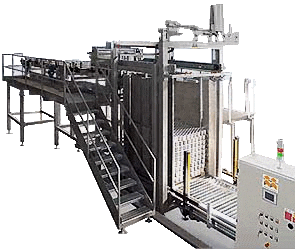An electrostatic powder machine works as follows to coat the weld:
- Dust extraction: The machine extracts the dust from a fresh dust tank, which is protected by several bags to keep the dust in perfect condition. A solids suction hose system is used to extract the dust.
- Powder Preparation: Before starting to work, the machine performs a fluidization process to ensure the correct state of the powder for its application.
- Storage and Screening: The powder is initially stored in the fresh powder hopper 1. From there it is fed to a sieving machine that grinds any dust agglomerates and removes the unscreenable parts.
- Powder Application: The powder passes to a third tank and from there to an application arm. At the application head, a negative voltage (8-30KV) statically charges the dust particles. This charge causes the particles to adhere to the container weld.
- Application Delimitation: The application is delimited with sealing skirts that form a perfect strip of powder covering the weld.
- Leftover Dust Recovery: Right after application, a vacuum system recovers the leftover dust and sends it to a recycling unit for reuse.
- Powder cooling: For a correct application, it is advisable to cool the powder before use, thus improving its fluidity along the pipelines.
This process allows the application of an electrostatic powder coating on the weld of the metal containers to protect it from the action of the contained product and from humidity and the environment. The most effective and widespread coating is currently done by electrostatically applied powder resin. The powder application system consists of several elements:
Powder application head: where the powder is applied to the container.
Sealing skirts: help to delimit the powder application.
High voltage element: statically charges dust particles.
Electrode: part of the high voltage system.
Dust diverter: helps to guide the dust in the system.
Spray arm: carries the powder from the tank to the container.













